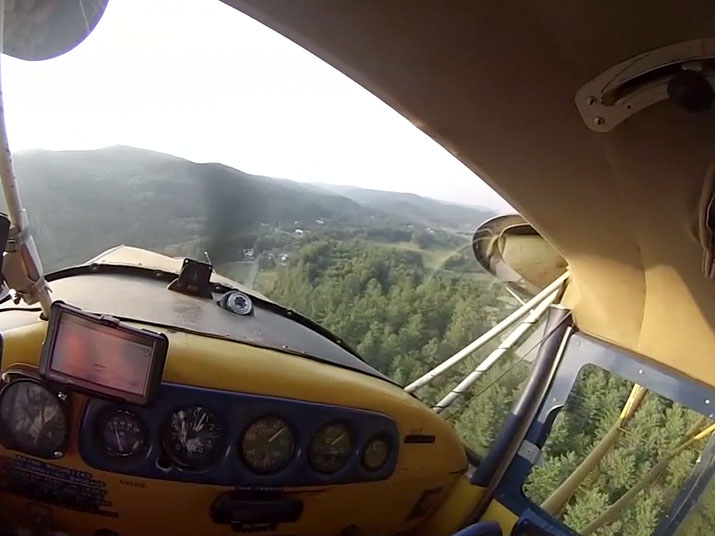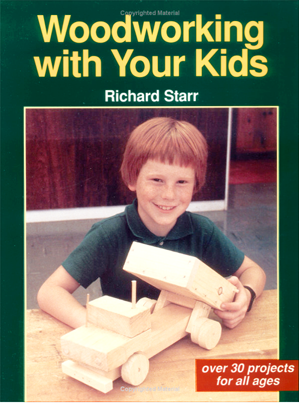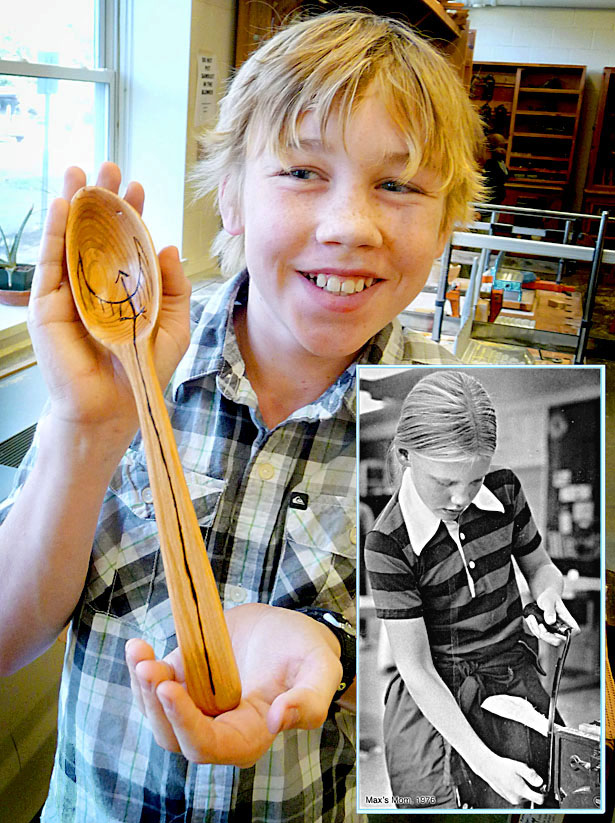When and where?
If
you stand across the street from Hanover High and look all the way
to
the very right corner of the building complex, that's where I built my
first
shop in the summer of 1972. That section of the school,
originally built as the
Hanover Elementary School, had a steeple
topped by a weather vane of flying
geese and which contained the bell we now have above our lobby.
The
building housed Richmond Middle
School, which was formed the year before I arrived.
My space was originally a classroom; today it's part of
the
district
offices. That August, I built four workbenches and two tool
cabinets, bought some tools and opened for business. We still
have the
same cabinets and benches. My original three power tools, a radial arm
saw, a
bandsaw and a grinder for tool sharpening, are still there too, joined
over time by a table saw and a small thickness planer. Many of our
current hand tools go back to those early days as well. "Plus ça change,
plus c'est la même chose", which, I am assured by our language
department, means "the more things change, the more they stay the
same."
I guess that applies to me as well.
The book
We had a French teacher back then, (her name escapes
me,) whose brother in Connecticut had an idea for a new magazine
for serious woodworkers. Before bringing out his first issue, he
visited many of his potential readers and authors. He'd heard
about me from his sister and from his
nephew who had enjoyed my class, so
he stopped by Richmond to check out our shop. Thus
began my connection with the early Fine Woodworking magazine,
now part
of a stable of publications that includes magazines, books, videos and
a web
presence. I started writing articles for them, including one
about our school program.
(FWW
#37, Nov/Dec 1982,) I became good friends with their first
editor
and eventually wrote a book
about helping kids make things of wood, based on my school program and
starring, mostly, RMS students. It was published in 1982.
|
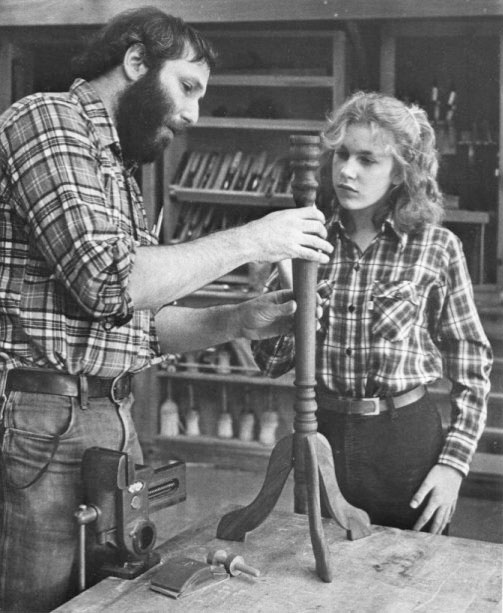




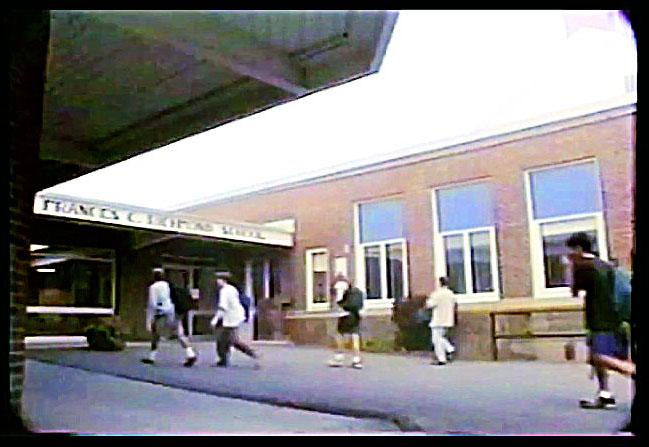
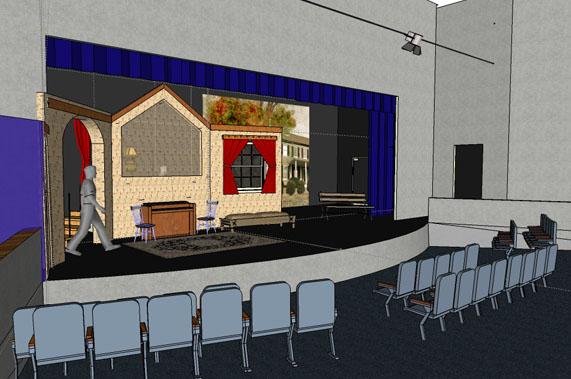

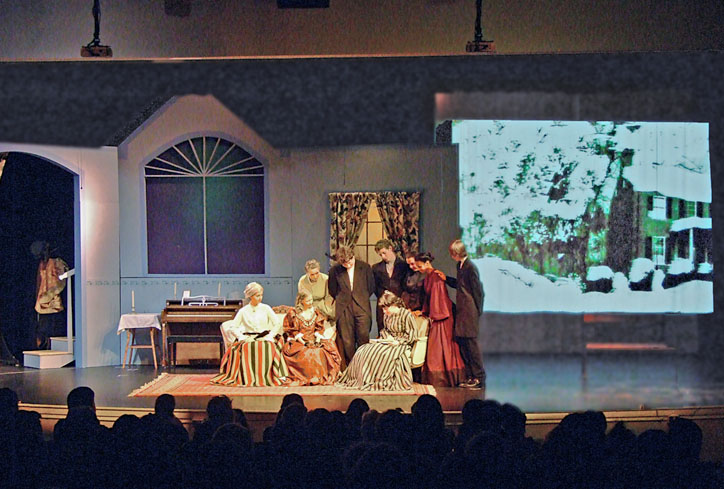
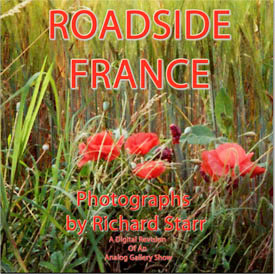 enough interesting images to put
together a gallery show. I learned to print color
in my darkroom, a chemical process which was pretty arcane and
expensive compared to how we do it today. I called the show Roadside France. It
opened at Cafe
LaFraise, a French
restaurant on Wheelock Street. (Remember that one?) Then at Peter
Christian's Tavern on Main Street. (Of course you remember PC's.) And
finally at the Lyme Library, (which, of the three, is the only one that
still exists.) Then I put the framed prints away and never looked at
them.
enough interesting images to put
together a gallery show. I learned to print color
in my darkroom, a chemical process which was pretty arcane and
expensive compared to how we do it today. I called the show Roadside France. It
opened at Cafe
LaFraise, a French
restaurant on Wheelock Street. (Remember that one?) Then at Peter
Christian's Tavern on Main Street. (Of course you remember PC's.) And
finally at the Lyme Library, (which, of the three, is the only one that
still exists.) Then I put the framed prints away and never looked at
them. On skis, Lake Morey.
On skis, Lake Morey.